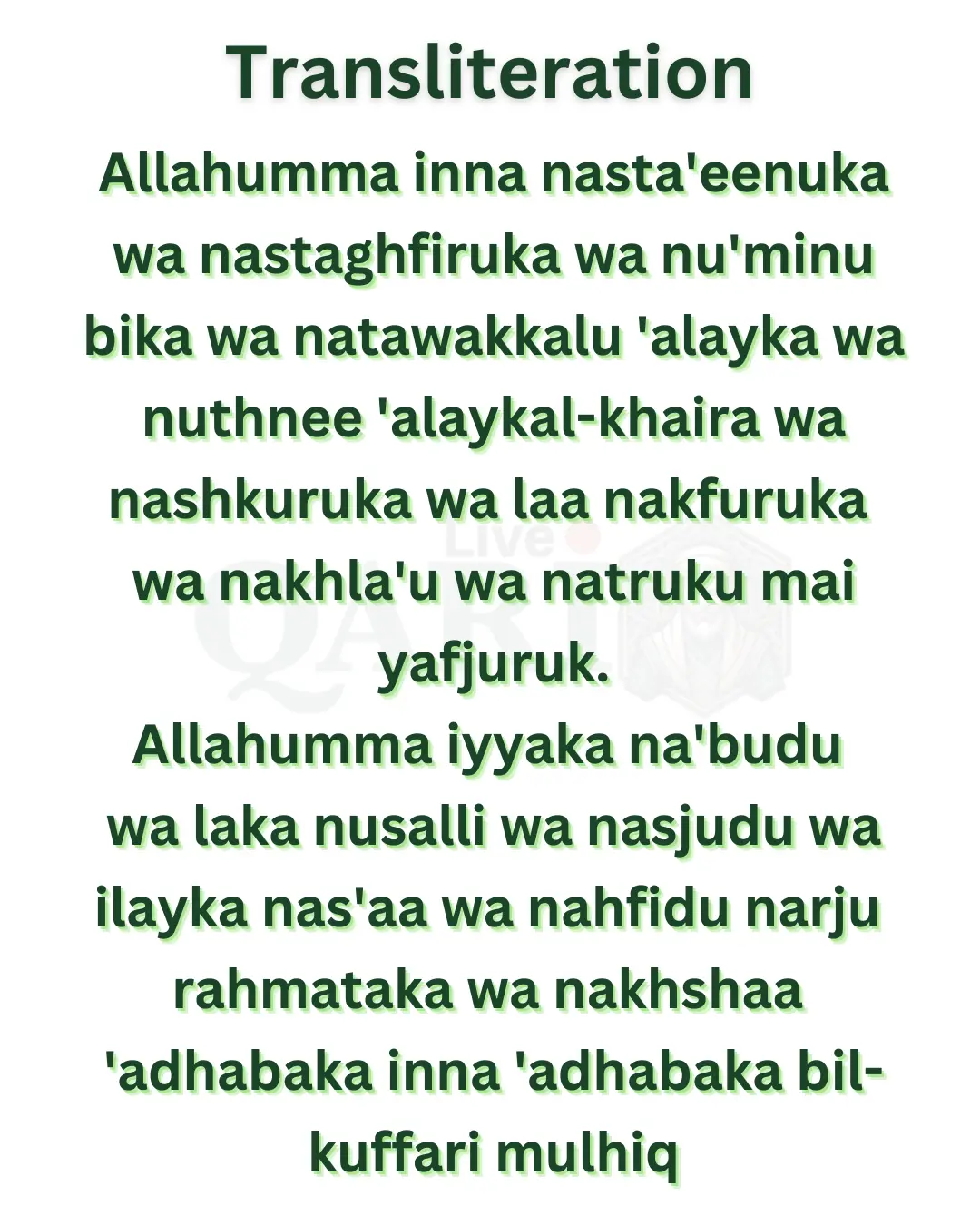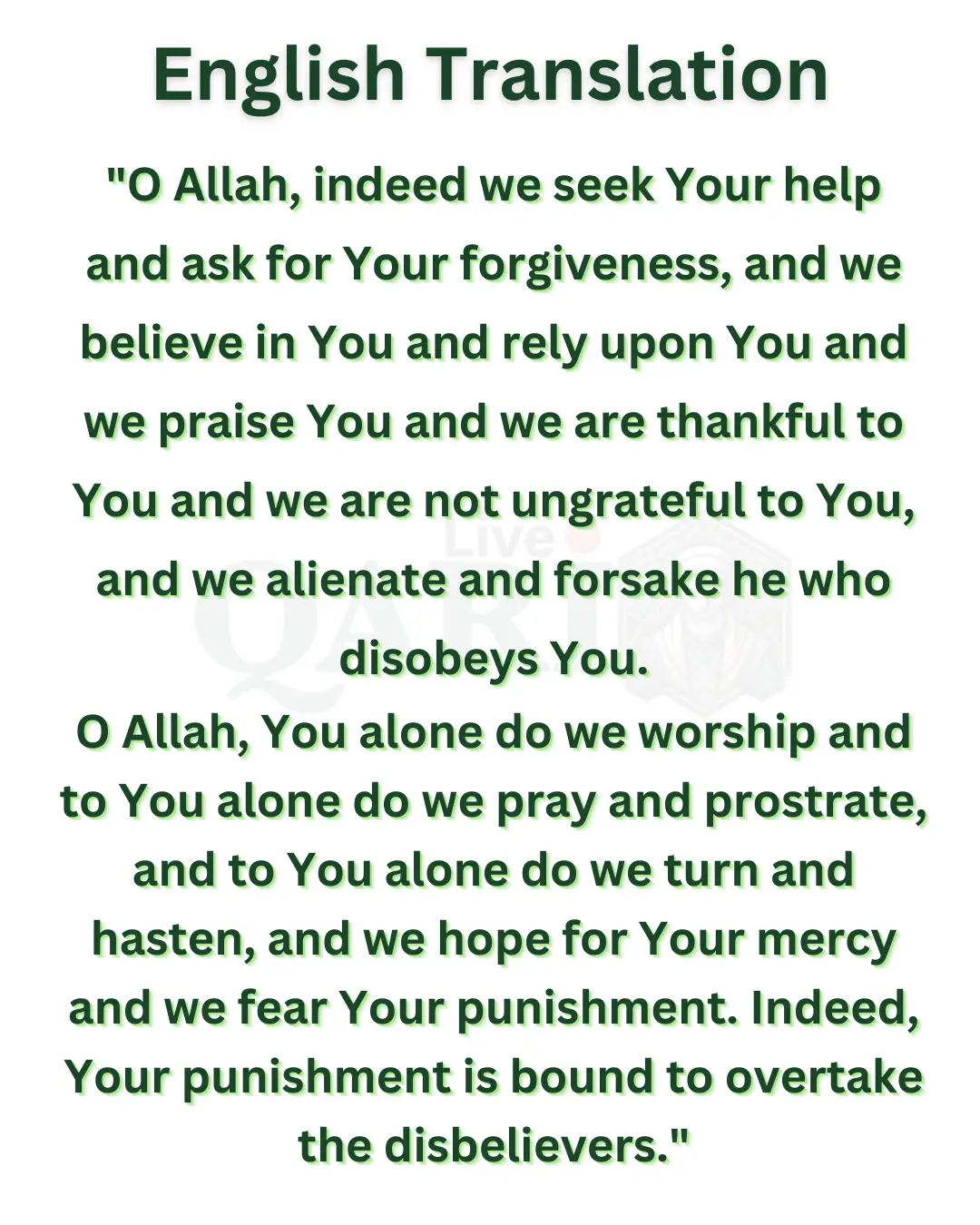
Have you ever wished for a quiet moment to connect with God, sharing your hopes and fears in the stillness of night?
Dua e Qunoot, a special prayer in Islam, offers just that.
What is Dua e Qunoot?
Dua e Qunoot, also known as Dua e Qunut (دعاء القنوت), is commonly recited during the night prayer called Witr.
The Arabic word “Dua” (دعاء) means “supplication” or “invocation,” while “Qunoot” (القنوت) signifies “standing devoutly” or “being obedient.”
Dua e Qunut isn’t in the Quran, but it’s a Sunnah of Prophet Muhammad (peace be upon him).
Narrated Anas:
Reference : Sahih al-Bukhari 1004
Related Posts
- Dua e Masura: The Protected Supplication for Blessings and Protection
- Ayatul Kursi: With PDF, Video, Audio, and Translation
- 4 Qul in Islam: Your Ultimate Key to Protection and Blessings
Download Dua e Qunoot PDF
Download the Audio of Dua e Qunoot
How to Pray Salat al-Witr (The Witr Prayer)
Salat al-Witr is a Sunnah prayer. There are various methods for praying Witr, but here’s the most common way, consisting of three rak’ahs:
How to Pray Witr: A Step-by-Step Video Guide
Benefits of Dua e Knoot

Hadith’s on the Dua e Kanoot
Hadith 1
“Anas was asked, “Did the Prophet (SAW) recite Qunut in the Fajr prayer?” Anas replied in the affirmative. He was further asked, “Did he recite Qunut before bowing?” Anas replied, “He recited Qunut after bowing for some time (for one month).”
Reference : Sahih al-Bukhari 1001
Hadith 2
“I asked Anas bin Malik about Qunut, and he said: ‘The Messenger of Allah (SAW) recited Qunut after Ruku’.”
Grade: Sahih (Darussalam)
Reference : Sunan Ibn Majah 1184
Hadith 3
“He was asked about Qunut in the Subh prayer, and he said: “We used to recite Qunut before Ruku’ and afterwards.”
Grade: Hasan (Darussalam)
Reference : Sunan Ibn Majah 1183
Transliteration and Tarjumas
Frequently Asked Questions (FAQ’s)
What is the meaning of Al Qunut?
Al Qunut (القنوت) primarily refers to a special supplication recited while standing during prayer. While the literal meaning in Classical Arabic is “being obedient” or “the act of standing,” it encompasses broader meanings like humility, obedience, and devotion. The phrase “Du’a Qunoot” emphasizes that it is a specific type of supplication within the prayer.
Can I pray Witr without Qunoot?
Yes, you can pray Witr without reciting Qunoot. While Qunoot is a recommended (Sunnah) part of the Witr prayer, it is not obligatory. Omitting it occasionally is permissible and does not invalidate your prayer. Even the renowned scholar Shaykh Ibn Baz confirmed this, stating there is no harm in omitting Qunoot sometimes.
How I can learn dua e qunut?
You can learn Dua e Qunoot by downloading the PDF and audio files provided in the blog.
Send Blessing on Prohphet Muhammad (PBUH)











